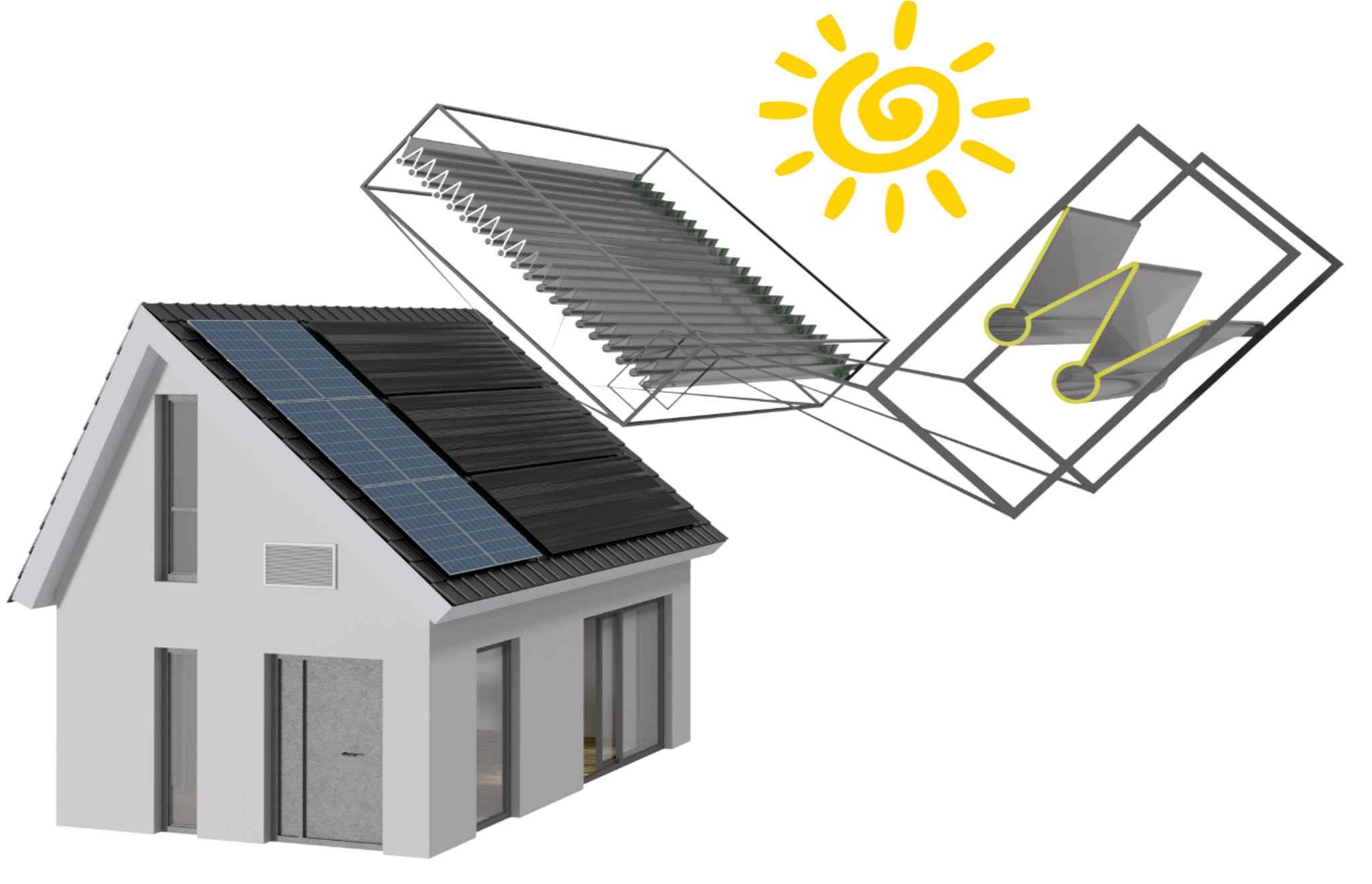In collaboration with researchers at Karlsruhe Institute of Technology, University Professor Geoffrey Ozin and his team have designed and implemented a new model for photoreactors, a solar-powered technology for converting water, carbon dioxide, methane, and nitrogen into green commodity chemicals and fuels. Their design advances the emerging photoreactors field and could make a sustainable future more affordable and practical.
Imagine a future where we can replace fossil-fuel sourced chemicals and fuels with Earth's cleanest and most natural resources to deliver green alternatives.
Photoreactors can make this sustainable future a reality. This technology combines the photons in sunlight and reactants to generate green chemicals and fuels. What distinguishes photoreactor from thermoreactor technology is that they operate at low temperatures and light intensities. They enable a wide range of photochemical conversions, including hydrogen production through photochemical water splitting, methanol synthesis from carbon dioxide and water, and ammonia synthesis from nitrogen and water. By using sunlight and water, photoreactors could effectively reduce carbon emissions.
Despite their high potential, photoreactors have been plagued by several challenges. Their construction materials and manufacturing are expensive. In addition to high costs, they are inefficient with respect to the conversion of photons-to-products. To create these photochemical conversions, photoreactors rely on a photocatalyst, a material that absorbs light and converts a reactant into a product. This process is known as photocatalysis. However, non-productive processes due to the reflection, scattering, transmission, and absorption of light by the photocatalyst and the photoreactor materials have resulted in parasitic light losses, namely energy losses by unwanted routes. Photoreactors would benefit from sun-tracking, a device that adjusts the angle of the photoreactor with respect to the position of the sun for optimal harvesting of light for use by the photocatalyst.
To be technologically and economically viable, the photon-to-product conversion efficiency of the photoreactors must be at least 10%. While the science of integrating photocatalysts into photoreactors over the past decade for making green chemicals and fuels has yielded significant advances, unfortunately the optimism for technological practicality has been dampened by abysmal efficiencies of 1% or less.
A sustainable future for all life on Earth demands an environment free of constant duress from greenhouse gas induced global warming. The threat can be reduced by transitioning our fossil energy infrastructure to one founded on renewable energy. The technical centrepiece of the envisioned transition are materials that enable generation, conversion, storage, and utilization of renewable energy. Materials to fulfill these needs must realise a specific suite of properties to achieve a desired set of performance metrics to enable renewable energy technologies. In this regard, research on optochemically engineered photocatalysts and photoreactors, pioneered by the University of Toronto Solar Fuels Group, is proving indispensable.
-Professor Ozin
This has now all changed with a breakthrough from a group of researchers from Canada and Germany. They have invented a new model for photoreactors—that are low-cost and highly efficient. This group included the University of Toronto's University Professor Geoffrey Ozin (Department of Chemistry) and Karlsruhe Institute of Technology's Postdoctoral Researcher Paul Kant and PhD Student Shengzhi Liang, Research Scientist Dr. Michael Rubin, and Professor Roland Dittmeyer (Institute for Micro Process Engineering and Institute of Catalysis Research and Technology).

Upper left: Photo of the photoreactors panels
Upper right: Photo of the V-shaped concentrators and tube-like cavity
The team developed a panel-like photoreactor that contains hundreds of parallel microscale reaction channels. A key feature of their design is that each reaction channel is connected to a V-shaped light capture unit that guides the light into the channel where the photocatalyst is located. All surfaces are highly reflective to optimize the transport of photons from the external light source to the photocatalyst housed in the microchannels with minimal parasitic light losses. This innovative photoreactor design allows the photoreactor to capture photons at high efficiency under varying sun directions and, hence, eliminates the need for sun-tracking. In addition, the panels are manufacturable via extrusion of polymers. As a consequence, these photoreactors are inexpensive and easily manufacturable at scale. In future, a design adaptation can address the intermittency problem of sunlight using light-emitting diodes integrated into the photoreactor as the photon source, powered by renewable electricity from photovoltaics and backed up by lithium-ion battery electricity storage to provide 24/7 operations.

The researchers published a manuscript of their proposed model in Joule with promising results. Their photoreactors can outperform existing state-of-art photoreactors. For example, they have achieved a "photocatalytic efficiency that is more than four times higher" than a simple quartz glass capillary photoreactor. Their prototype photoreactor panel is affordable, functional, and scalable. They cost USD $22 per square meter and weigh two kilograms per square meter, roughly 20% of state-of-the-art photovoltaic panels. Furthermore, they can be employed on rooftops of houses and solar farms and integrated with photovoltaics to synergistically produce both renewable electricity and green chemicals and fuels.
This advancement in photoreactors is critical to the current climate crisis. On Tuesday, July 7th, 2023, Earth's average temperature spiked at 17.18 Celuis— breaking the record for the hottest day ever. With soaring temperatures, we need to find ways to combat climate change. Hence, these low-cost and highly efficient photoreactors could help phase out fossil fuels, resulting in a carbon-free future.
Professor Ozin discusses their innovative design further in the Advanced Science News article.


